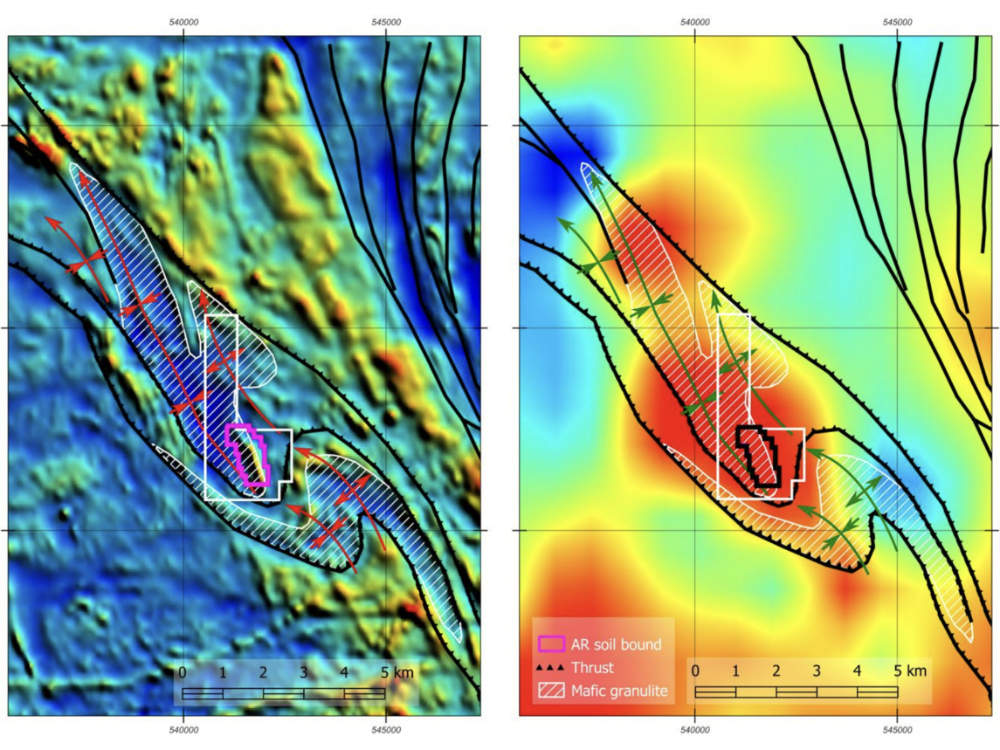Impact gears up to drill nickel-copper-PGE target with Gonneville similarities
- Infill soil geochemistry assaying at Impact Minerals’ Caligula prospect has identified a nickel-copper-PGE target for drilling
- New anomaly lies over a very strong MMT conductor and EM conductor along the eastern margin of the original Caligula anomaly
- Drilling of the new target, which has similar characteristics to Gonneville, is expected to start in Q2 2025
Special Report: Infill soil geochemistry assays at the Caligula prospect within Impact Minerals’ Arkun project in WA have revealed a coincident nickel-palladium-gold-chrome-cobalt anomaly for drill testing.
Caligula was previously identified as a large copper-dominated soil geochemistry anomaly that spans ~5000m north-south and at least 2000m east-west based on broad-spaced sampling.
Impact Minerals’ (ASX:IPT) new, better-defined anomaly is along the eastern margin of the original Caligula anomaly and lies over a very strong conductor identified in a mobile magnetotelluric (MMT) survey and an electromagnetic (EM) conductor noted in an airborne survey.
Its metal association is more characteristic of magmatic nickel-copper-PGM sulphide deposits similar to Chalice Mining’s (ASX:CHN) Gonneville deposit and the high-grade Nova-Bollinger deposit in the Albany-Fraser Orogen.
“Our focus over the past 12 months has been on the pre-feasibility study for the Lake Hope high purity alumina project, which is nearing completion,” managing director Dr Mike Jones said.
“In the background, we have been developing the Caligula target for a maiden drill program, which will be partially funded by the $180,000 EIS grant we received last year.
“We hope to deliver another discovery in the emerging mineral field of the South West Yilgarn.
“The strong correlation between elevated palladium, platinum and gold-in-soil anomalies, and key geophysical conductors identified in our previous ground-breaking MMT and EM surveys highlights the compelling targets we plan to drill soon after the closure of the current renounceable rights issue on March 21.”

Target identification
The new target was identified through the ongoing analysis of soil geochemistry results, regional magnetic and gravity data combined with MMT – an advanced airborne geophysical method that measures resistivity and conductivity to depths of ~1km depending on the subsurface geology – and EM data.
It is a conductive anomaly in the MMT data that coincides with a decrease in magnetic intensity within a linear magnetic unit on the eastern side of the regional Caligula anomaly.
This change in geophysical characteristics was interpreted as possibly relating to the sulphide replacement of magnetite and is potentially linked to mineralisation. In addition, an airborne EM anomaly was identified within the same zone.
A follow-up infill soil geochemistry survey over this area returned a 400m by 200m zone of coincident anomalous gold, palladium, platinum, nickel, chromium and cobalt on the western side of the maximum MMT conductivity zone and encompassing the airborne EM anomaly.
The MMT conductive zone contains strong palladium values of up to 111 parts per billion and gold values of up to 42ppb.
This is very encouraging for the potential discovery of disseminated or massive sulphides, making these priority areas for follow-up drilling.
IPT plans to drill test the target in the June 2025 quarter and will use the WA state government’s $180,000 EIS grant to partially fund this work.
Two deep drill holes are planned to test the MMT and EM anomalies that underlie the strong soil geochemistry.
Further target generation is ongoing and may also be incorporated into the drill program.
This article was developed in collaboration with Impact Minerals, a Stockhead advertiser at the time of publishing.
This article does not constitute financial product advice. You should consider obtaining independent advice before making any financial decisions.
Explore More
-
 Investor Guide: Gold & Copper FY2025 featuring Barry FitzGerald
Investor Guide: Gold & Copper FY2025 featuring Barry FitzGerald
免责声明:投资有风险,本文并非投资建议,以上内容不应被视为任何金融产品的购买或出售要约、建议或邀请,作者或其他用户的任何相关讨论、评论或帖子也不应被视为此类内容。本文仅供一般参考,不考虑您的个人投资目标、财务状况或需求。TTM对信息的准确性和完整性不承担任何责任或保证,投资者应自行研究并在投资前寻求专业建议。
热议股票
- 1
- 2
- 3
- 4
- 5
- 6
- 7
- 8
- 9
- 10